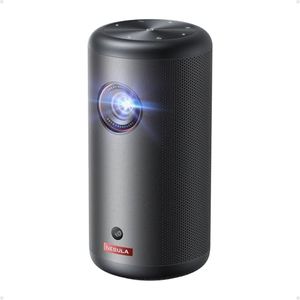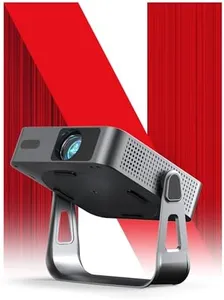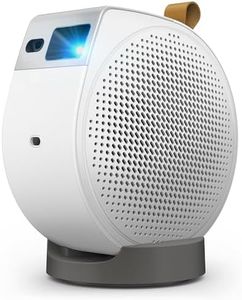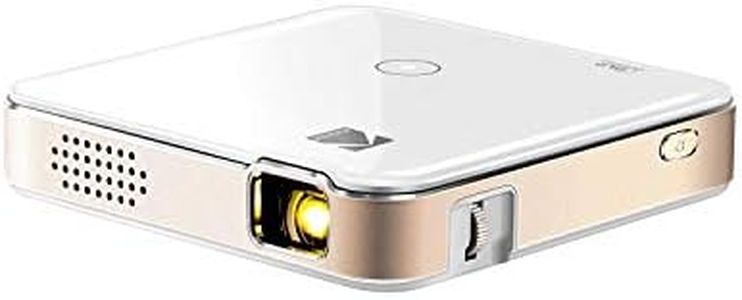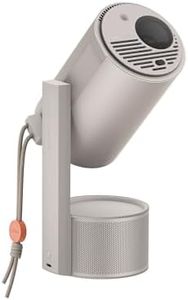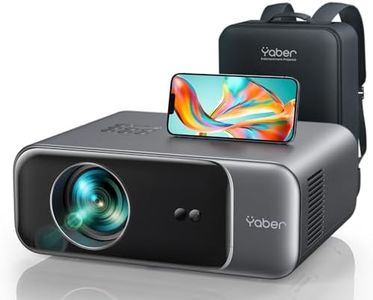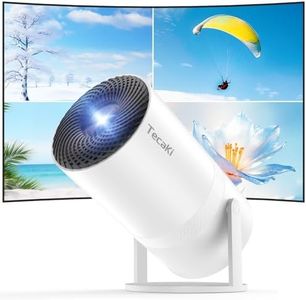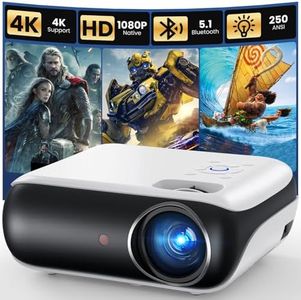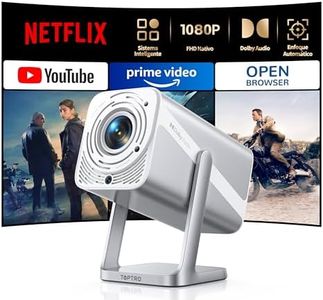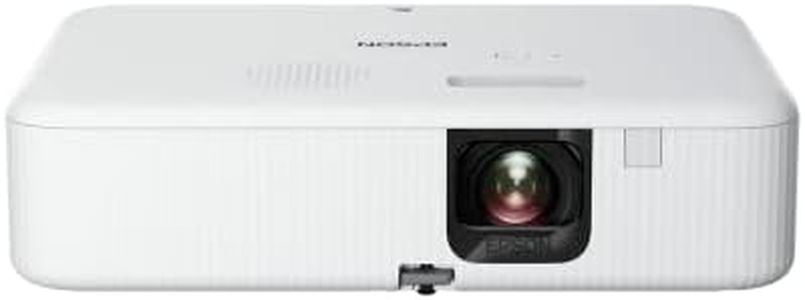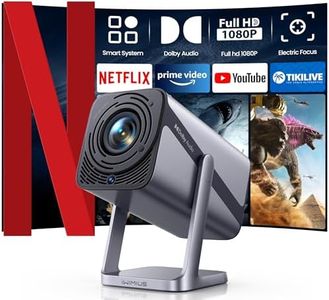We Use CookiesWe use cookies to enhance the security, performance,
functionality and for analytical and promotional activities. By continuing to browse this site you
are agreeing to our privacy policy
10 Best Mini Portable Projector
From leading brands and best sellers available on the web.Buying Guide for the Best Mini Portable Projector
When choosing a mini-portable projector, the goal is to find a balance between size, image quality, brightness, connectivity, and battery life. Since these projectors are designed to be compact and easily portable, they often include trade-offs compared to full-sized options. The best choice for you depends on how and where you plan to use your projector—whether for home entertainment, business presentations, travel, or camping.Brightness (Lumens)Brightness, often measured in lumens, determines how well the image will show up in various lighting conditions. A projector with higher lumens produces a brighter image, making it easier to see in well-lit rooms, while lower lumens projectors are best suited for dark environments. For mini-portable projectors, you'll commonly see values ranging from 100 to 1000 lumens. Under 300 lumens is good for completely dark rooms and casual or bedtime viewing. Between 300 and 700 lumens can handle dim lighting and provide more versatility. Above 700 lumens, mini projectors can better handle ambient light, which is helpful if you plan to use the projector outdoors in the evening or in rooms that aren’t fully dark. Think about where you'll be watching most often—the lighter the environment, the more lumens you’ll need.
ResolutionResolution tells you how many pixels the projector uses to create an image, directly affecting sharpness and detail. Common resolutions for mini-portable projectors include standard definition (480p), high definition (720p), and full HD (1080p). 480p is fine for casual or children's use, but images will be less sharp. 720p is a good middle ground, offering decent clarity for movies or presentations. 1080p provides the crispest visuals and is ideal if you plan to watch a lot of movies, share photos, or want your content to look as clear as possible. If you’ll be projecting larger images or using the projector for important presentations, aim for the highest resolution you can find in a portable size.
Portability (Size and Weight)Portability relates to how easy it is to carry and set up your projector, often a core feature in this category. Some mini-projectors are small enough to fit in your pocket, while others are more ‘compact’ than truly ‘mini’ but may offer more features. If you want a projector you can easily toss in your bag and take anywhere, go for the smallest and lightest models (some even weigh less than a pound). If you don’t need to move it often or prioritize features like better sound, you might opt for slightly larger, still-portable options. Consider your typical use case—if you travel a lot or want ultimate convenience, size and weight become more important.
Battery LifeBattery life determines how long the projector can run without needing to be plugged in, which is especially important if you want to use it on the go, outdoors, or where power outlets aren’t available. Mini projectors can offer anywhere from 1 to 4 hours of battery per charge. Less than 2 hours may be enough for quick presentations or sharing short videos; 2-3 hours suits most movies or meetings; 4 hours or more gives maximum flexibility for longer sessions or traveling. Match the battery life to your usual needs—if you plan to use your projector mostly plugged in, this may not be as important; otherwise, look for longer battery life for more freedom.
Connectivity OptionsConnectivity refers to how you get your content onto the projector. Mini-portable projectors might include HDMI, USB, microSD slots, Bluetooth, and Wi-Fi. HDMI is best for connecting laptops or streaming devices, USB and microSD are handy for showing files directly, and Bluetooth or Wi-Fi enables wireless streaming from phones and tablets. If you want to connect to a lot of different devices, or value wireless convenience, pick a projector with multiple and modern connectivity options. Consider what types of devices you use most—make sure your chosen projector supports them.
Speaker QualityBuilt-in speakers in mini-projectors are often smaller and less powerful than those in larger devices, but good sound can add to your viewing experience without needing extra gear. For small rooms or portable use, basic speakers might be enough. If you want louder or clearer audio, particularly for movies or group viewing, look for models with enhanced speakers or audio output so you can connect external speakers or headphones. Think about your settings—using the projector on your own or in quiet spaces might not require much sound, while sharing with friends or family outdoors may need better audio.
Keystone Correction and FocusKeystone correction and focus features help improve the clarity and shape of your projected image, especially if the projector isn’t perfectly lined up with the wall or screen. Keystone correction (manual or automatic) lets you adjust image angles, fixing distortions when projecting from below or to the side. Some projectors offer auto-focus for sharper images without manual adjustment, while others may require you to adjust focus manually. If you’ll be moving the projector around a lot or using it in different locations, these features make setup quick and your image look better, so prioritize them if convenience is key.
